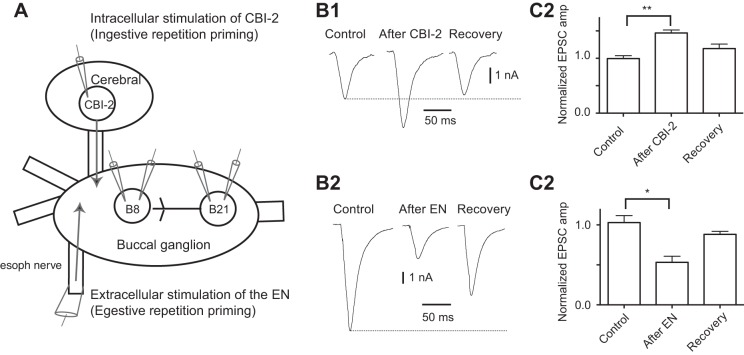Fig. 1.
A: experimental setup. Experiments were conducted with one or two sharp electrodes in both B21 and B8. Ingestive priming was induced by stimulating cerebral buccal interneuron 2 (CBI-2) with a sharp electrode. Egestive repetition priming was induced via extracellular stimulation of the esophageal nerve (EN). B: activation of physiologically relevant inputs to the feeding central pattern generator (CPG) modifies the efficacy of B21–B8 synaptic transmission. In all experiments, B21 was depolarized to −40 mV, and spikes were triggered via the injection of brief current pulses. Induced excitatory postsynaptic current (EPSCs) were recorded from B8 neurons held at −60 mV using two-electrode voltage clamp mode (TEVC). EPSCs were recorded in high-divalent (HiDi) saline before (control) and after input activation. B1: CBI-2 stimulation potentiates B21–B8 synaptic transmission (n = 4). B2: group data for the experiment shown in A1. C1: EN stimulation depresses B21–B8 synaptic transmission (n = 4). C2: group data for the experiment shown in C1. *P < 0.05 and **P ≤ 0.01.

